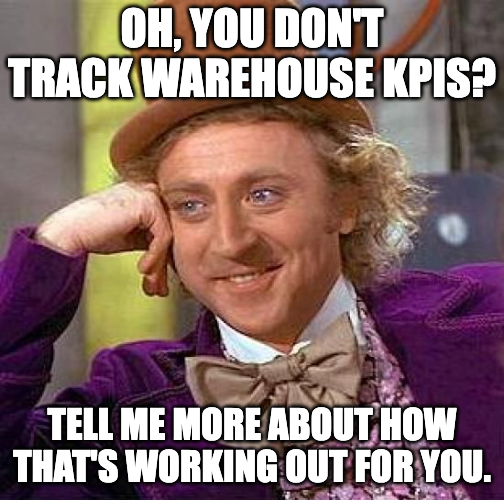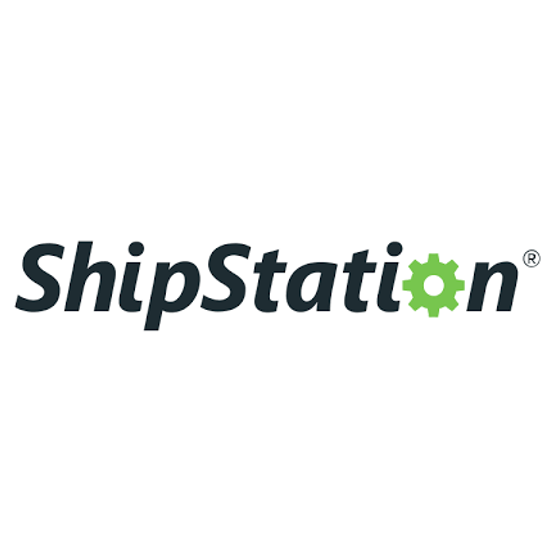Improving warehouse efficiency is one of the best ways to save money and boost your profit, yet only 63% of warehouse managers are using technology to monitor their warehouse and supply chain!
That puts you in a good position.
Becoming a part of the savvy 37% that do leverage technology for warehouse efficiency means you’ll pass by the late adopters in a flash.
The good news is there are loads of opportunities to improve efficiency, and some of them are free and easy to implement.
In this guide, we will go through my top strategies to improve efficiency in the warehouse that you can implement today.
What Is Warehouse Efficiency?
Warehouse efficiency is achieved by the optimization of storage utilization, inventory management, and order fulfillment processes to reduce operational costs and time while maximizing productivity and order accuracy.
Warehousing for ecommerce brands isn’t just about storing products and shipping them to customers.
It’s about providing a great customer experience, managing your bottom line, managing returns, and it has a big impact on your end to end order management process.
Causes of warehouse inefficiency
Small inefficiencies in the warehouse process can have a knock on effect on every part of the business.
For example, if a product is picked five minutes late and misses the delivery truck, then your customer will receive their shipment late.
Staff traveling to pick a product and bring it to the packing station comprises 50% of a picking time, and half of labor costs.
By creating small efficiency in the picking journey, you can not only reduce your staffing costs, but also increase the number of items picked per hour.
The main causes of inefficiency in a warehouse are:
- Warehouse layout: A poor layout causes longer picking and packing times, along with an increased safety risk.
- Warehouse management system and training: Easy to use systems that are integrated to your overall order management and inventory management systems will reduce staff training and picking errors.
- Manual processes: Poor use of technology and equipment can cause major delays and create a backlog of work.
- Product storage: Badly stored items will take longer to pick and increase the chance of product damage (and consequently, returns).
- Loading area: Inefficient loading areas mean that products can take longer to load and cause delays.
- Returns: Returns need to be processed quickly and effectively to reduce waste.
Key Metrics For Measuring Warehouse Efficiency
It is impossible to track how efficient your warehouse is without knowing what to track.
Different warehouses will need to track different KPIs, for example fresh food sellers will need to track spoiled products, whereas fashion brands need to track returns on a SKU level.

The main KPIs to track focus on how well the moving parts of the warehouse and team are working, and the effective use of technology.
These are the KPIs you need to track:
Order accuracy
Measures the percentage of orders that are picked, packed, and shipped without errors. High order accuracy rates indicate efficient processes and customer satisfaction.
This, along with inventory accuracy and order cycle time, is one of the main KPIs that will give you a general idea for how well the warehouse is running.
Working out order accuracy is quite straightforward. Here’s the formula:
Order Accuracy (%) = (Total Orders Shipped / Total Correct Orders) × 100
A good benchmark is to aim for 99.5% accuracy.
Inventory accuracy
Assesses how closely the physical inventory matches the recorded inventory data.
High inventory accuracy is critical for reducing stockouts, overstocks, and ensuring on time order fulfillment.
Inventory accuracy is usually measured manually using spot checks, but it can be a time-consuming process, so warehouse managers typically count a selection of the items to give a guide.
The accuracy is shown as a percentage, and 97% accuracy is the industry standard.
Order cycle time
Measures the time it takes from when an order is placed until it is fully shipped. Shorter cycle times typically show a more efficient warehouse.
The formula is as follows:
Order Cycle Time = Order Ship Time − Order Placement Time
You should aim for less than 24 hours for each shipment as an absolute minimum, but if you want to compete with Amazon and other large retailers, your cycle time should be measured in minutes not hours.
Picking efficiency
Evaluates the speed and accuracy with which items are picked from the warehouse.
This can be measured by items picked per hour or order cycle time. This is a great KPI to measure the effectiveness of the staff members and equipment in the warehouse.
Here’s how to calculate this metric:
Picking Efficiency (%) = (Total SKUs Picked / Total Hours Worked) x 100
There isn’t an industry standard KPI for this, but it could be measured by working out your previous picking efficiency and improving upon it.
Cost of inventory
Tracks the total cost of holding inventory, including storage.
It also includes ongoing costs such as insurance, depreciation, and obsolescence. This is a good KPI to measure if you have problems with cash flow and staying in stock.
On-time shipments
Tracks the percentage of orders shipped on or before the scheduled shipping time. Tracking this KPI usually requires you to have an integration with your shipping partner.
Most order management systems will allow integrations from the bigger shipping companies. This KPI is crucial for customer satisfaction and reliability.
To calculate, use this formula:
On-Time Shipments (%) = (Total Orders Shipped / Orders Shipped On Time) × 100
You should aim for at least 95% on-time deliveries.
Warehouse capacity usage
Assesses how effectively the warehouse uses its available space.
Some of the best warehouse management systems will help show your capacity usage, and this KPI will have a big impact on how you plan your warehouse layout design.
To find your capacity usage number, use this formula:
Warehouse Capacity Usage (%) = (Total Available Storage Space / Used Storage Space) × 100
Employee productivity
Measures the output per warehouse employee, often calculated as orders processed per employee per hour.
The work ethic of the staff obviously has a big impact on this, but other factors such as warehouse layout, effective use of equipment and technology, picking and packing methods, and warehouse safety all have a big impact on productivity.
Higher productivity rates generally show more efficient operations.
With this KPI, I like to set the productivity rates with my staff members, as it will give them buy-in to the whole system and keeps them accountable.
Different warehouses will have different ways of measuring productivity, and different staff members will have different KPIs.
Cost per order
Calculates the total operational costs divided by the number of orders processed.
This KPI helps assess the efficiency of warehouse operations and helps you set price points for shipping and your cost-of-goods-sold (COGS).
Return processing time
Measures the efficiency of processing returned items, including restocking or scrapping returned goods.
This KPI will also help you track products which are being returned a lot, which will help you identify problems in the supply chain.
Safety incidents
Tracks the number of safety incidents occurring within a given period. Keeping staff safe is obviously very important!
Tracking days since previous injury is a good start, but also tracking incidents by area in the warehouse will help to spot areas where the warehouse design isn’t working.
If you are using a 3PL or distribution center, then you need to make sure you are able to track these KPIs, or get reports.
Common Challenges For Warehouse Efficiency
The reason we track these KPIs is to help warehouse managers and ecommerce business owners head off common challenges that warehouses face.
Those common warehouse challenges include:
- Seasonal demand fluctuations. Demand can vary depending on the season, which can cause issues like overstocking during low demand periods and stockouts during peak seasons.
- Inventory management. Keeping inventory stocked at the right level, and managing overstock or understock situations are ongoing challenges.
- Staff management. Recruiting, training, and retaining skilled warehouse staff is a challenge, especially if you hire seasonal staff.
- Space utilization. Using the space you have effectively to create a good work flow and avoid having unused space.
- Technology integration. Implementing new technologies (like WMS, automated picking systems, or robotics) can improve efficiency but also create challenges such as cost and upskilling staff. However, it removes some human error which can cause mistakes.
- Process improvements. Continuously improving processes to reduce waste and costs, whilst increasing productivity, can be complicated, especially with limited space and resources.
- Regulations and compliance. It is very important to stay on top of the latest laws, regulations, and compliance, especially when you sell products to multiple countries/ jurisdictions, or you sell multiple types of products with different requirements.
- Customer behaviors and expectations. Shipping is becoming faster, with many more customers now expecting next day delivery. You need to stay competitive with your competition, especially as you are often competing with excellent services such as Amazon Prime.
Need Help Finding The Perfect Warehouse Management Tools?
We got you. Pick exactly what you need, and we’ll identify the best tools for you.
13 Strategies For Improving Your Warehouse Efficiency
Warehouse layout, inventory and warehouse management software, staffing and processes are the main areas where efficiency can be improved for warehouse optimization.
These are my 13 strategies for you to work on straight away.
Design smarter warehouse flows

Warehouse layout design has a massive impact on your efficiency, as it touches every part of the flow from receiving right through to the customer getting their products on time.
Check out our warehouse layout guide for a more in depth look at warehouse design, but the key things to consider are:
- The shape of the warehouse. Different shaped warehouses are more suitable for different businesses. The right warehouse shape can remove bottlenecks.
- Where have you placed your fastest selling items? You should keep fast moving items near the picking station. Use ABC analysis to understand which products sell quickly.
- Where have you placed your bulk storage items? The storage area needs to be accessed much less frequently, but still has a big impact on your storage capacity.
- Have you created enough storage space for receiving and shipping trucks, as well as internal vehicles such as forklifts. Pallet racks are great for putaway, but require space.
- What kind of equipment do you need? For example, will you use shelving only, or storage bins and pallets? Do you use conveyors or picking workstations?
Make sure all your staff fully understand the workflow of the layout of the warehouse, and increase training if needed.
Maximize space utilization
The shape of the warehouse is one aspect of having a smart warehouse layout, but it is just as important to maximize the space you have (no matter its shape).
Most brands don’t have the luxury of unlimited space, and many businesses share warehouses.
You can maximize space by looking at keeping your stock in the right zones of the warehouse and using shelving to make the most of the height of the space.
A more advanced strategy is to measure the volume of all the items you will generally be storing, and create shelving or storage boxes to fit more neatly.
Reliable Plant Magazine has some great options for warehouse managers:
“The space between the top of the stored product and the bottom of the rack beam is reserved for forklift interaction.
You’re only required to allow for 6 inches here, but you might have 8 inches or more between the load and the rack.”
Even small changes like the height of the shelves can save you hundreds of square feet over a whole warehouse.
Track your KPIs

It’s important to set KPI goals that will have the biggest impact on the improvement of the warehouse.
Understand where your inefficiencies currently lie, and work out what an optimized warehouse would look like.
For example, if each team member is picking and packing 10 units an hour, but you are falling behind on your on-time delivery KPI. You might need to find strategies for improving your picking rate to 11 or more per hour.
Define your KPIs and goals with your warehouse team, as they might have more experience than you, and it’ll keep you on the same page.
Once you know where the inefficiency is, and you have set a new goal, you can track this data in your WMS to see if any changes you make are having the right effect.
Use the best order picking methods
Order picking requires both speed and accuracy, which can be contradictory forces.
The faster your team picks the products, the more orders your team can pick in a day, which improves your overall efficiency.
There are six main methods for picking, and each has its benefits and drawbacks.
Some picking methods can be used in any sized warehouse, whereas some will need a larger space and more technology.
Single order picking
Most time-consuming, involving picking one order at a time. Ideal for smaller warehouses with lower order volumes due to its simplicity.
Benefit: This method is easy to implement and manage.
Drawback: It can be highly inefficient for large order volumes, as it increases travel time and labor costs.
Batch order picking
Allows pickers to handle multiple orders at once, focusing on one SKU at a time.
This method reduces travel time and is effective for businesses with high order volumes or recurring orders with similar items.
Benefit: This method reduces travel time, leading to faster order processing.
Drawback: There’s an increased complexity in sorting and packing orders accurately after picking.
Pick and pass
Involves dividing the warehouse into zones, with assigned workers picking multiple orders within their zone before passing containers to the next zone.
This method enhances picking accuracy and reduces errors by improving tracking and accountability.
Benefit: This method enables improved accuracy and accountability within each zone.
Drawback: There’s a potential bottleneck at handoff points, which can slow down the process.
Zone order picking
Similar to pick and pass, but can be used without passing items between zones.
Each picker works within a designated zone, and containers are passed along zones as needed. This method helps handle high volumes efficiently and reduces picker congestion.
Benefit: This method can manage high order volumes and reduce congestion.
Drawback: It can lead to inefficiencies if one zone becomes overloaded compared to others.
Cluster order picking
Pickers handle multiple orders simultaneously, picking various items for each order using a cart loaded with multiple containers.
This method, supported by warehouse automation like autonomous mobile robots and automated guided vehicles, reduces travel time and increases productivity, particularly suited for high-volume environments.
Benefit: This method significantly reduces travel time and increases productivity.
Drawback: There’s a potential for higher initial costs due to the need for automation technology.
Wave order picking
All zones are picked simultaneously, reducing the time taken to complete multiple orders.
Items are later sorted and consolidated, which may require more time and labor but enhances overall picking efficiency. Ideal for environments with a high number of picks per order.
Benefit: This method enhances overall picking efficiency across the warehouse.
Drawback: There’s increased labor and time required for sorting and consolidation after picking. You also need to account for congestion in the packing area.
Organize stock for optimal access
The movement of people and equipment around the warehouse is one of the main things affecting productivity.
There are some easy wins such as:
- Zone based organization: Organizing inventory by how often it is picked for orders.
- Use vertical space more efficiently for space optimization: Increase usage of shelves matched with zone based organizing to keep fast moving products within reach.
- Update signage: Use clear signage for staff to enable fast location of products.
- Use RFID technology: A more advanced technique, but using RFID can help staff members locate stock easily.
- Use WMS effectively: Make sure your WMS is updated with stock locations.
Utilize real-time inventory management
Real time inventory management helps you to avoid doing lots of lengthy manual checks.
The best WMSs integrate with RFID technology, which allows you to track the physical location of all stock items.
This should be integrated with your ERP and Order Management Systems so that customers, customer support and back end staff can all see a live view of inventory levels.
This will improve inventory controls, and avoid stockouts and over stocking.
Master demand forecasting
Demand forecasting is predicting future customer demand using historical data, market trends, and statistical analysis.
You can usually see this data using reports from your ERP and OMS.
The main benefits for the business are you can ensure you have the right stock levels that avoid stockouts and waste, while maximizing sales.
The benefit for your warehouse is you can effectively use the warehouse space available, and plan for a more efficient and strategic warehouse, especially if your products have seasonal sales spikes.
Leverage warehouse management systems (WMS)
Warehouse management systems have a lot of features such as inventory management and shipping integrations, but there are some features of a WMS that you might not be using effectively.
For example:
- Staff management
- Reporting and analytics
- Warehouse layout optimization
- RFID integrations
- Automated workflows
- Third party system integrations
The WMS is the tech that keeps a warehouse organized, but it often has a lot of features to keep your business running efficiently.
We’ve looked at tons of options and put together the top 25 warehouse management software to consider. Here you can find our top ten picks:
Implement automation tools
Most warehouse activities require some human input, but you might find that there are many activities your team is doing manually that could be automated.
These activities don’t have to be complicated, expensive processes.
Some are as simple as automatically printing shipping labels by integrating with your shipping partner’s system.
You can also automate the workflow for picking and packing.
When an order is placed, the WMS can automatically create a pick request, tell the picker the location of the stock, print the shipping label and any invoices/receipts needed, so there are no manual processes except picking the item.

Some more advanced automations could be to add carousel systems to bring the products to the packing station, further reducing staff input.
Explore emerging technologies
There are new technologies appearing all the time, and you can improve overall efficiency by keeping on top of them.
Robotics are becoming more advanced, with systems available for sorting and picking.
There are even automated storage and retrieval systems that automatically replace the staff member by locating, picking, and retrieving items, so they can be taken to the packing station.
The staff member can then verify the products in each order using the barcode.
Some technology like this is expensive, and only makes sense on a large scale, but there are more affordable technologies that will streamline your operational efficiency.
Wearable technology such as headpieces can help guide staff to the correct place automatically, and they integrate with your overall systems so it removes any manual processes.
Foster skill development and training
It is important to improve the skill level of your staff by giving specialized training. At the very least, a trained employee is way more efficient than someone you just hired.
Staff want to progress in their careers too, and training can help ambitious staff get to the next level. The knock on effect of this is improved efficiency in your business.
Cross-training can also be a good idea, as it will help your staff to fill in when there is an absence.
When staff members have expertise in multiple areas of the warehouse operations, they’ll be more agile in recommending improvements to the warehouse workflow.
Boost productivity with employee incentives
Using the KPIs you’ve identified, you can create incentive structures that reward staff members for hitting or exceeding goals, improving overall warehouse performance.
Some KPIs will be easy for staff to understand and improve on, such as the number of items picked per hour.
But for staff not involved in front-line activities, such as health and safety, you could implement safety rewards for periods without incident, or tie in safety with the speed of picking, so there is a hybrid reward.
Incentives can create a culture of productivity within the warehouse, where competition and performance encourages everyone to up their game.
Apply Lean warehousing principles
Lean warehousing focuses on increasing efficiency by using fewer resources and smarter processes.
Teams might initially seek quick fixes like adding new staff, but it's generally more beneficial long-term to enhance team productivity.
This might involve adopting zonal or batch picking to decrease picking times, or refining workflows to reduce steps team members take.
Encourage team members to propose enhancements to warehouse operations.
This approach not only secures team commitment to new ideas but also leverages their expertise in shaping an effective warehouse environment.
Create A More Efficient Warehouse Today
An inefficient warehouse will have a big knock on effect on the rest of the order management and inventory management processes, and eventually this will affect customer satisfaction.
By implementing a great WMS system, you can create automations and data reporting that will help you to understand where mistakes are being made, and how you can overcome them.
For more information about warehouse management software, check out this guide with some of my favorite software, and the pros and cons of each.
The world of ecommerce moves fast—and so do you. Subscribe to our newsletter with the latest insights for ecommerce managers from leading experts in ecomm.
Warehouse Efficiency FAQs
Let’s end with a few more quick questions to wrap up this topic.
How do you measure warehouse efficiency?
The main KPIs to track for warehouse efficiency are order accuracy, inventory accuracy, picking and packing speed, safety incidents, warehouse capacity, and cost per order.
How can workforce management practices impact warehouse productivity?
Safety and training are key to creating a great work environment. Staff who believe in the direction of the business will have buy-in to future plans for efficiency. Lean management practices can also have an impact on doing more with less.
How can technology and automation transform warehouse operations?
The most important technology is a WMS, which can include automations. Automations can save resources by reducing picking time and increasing picking accuracy.
How does inventory management impact warehouse efficiency?
It’s important to manage your inventory as efficiently as possible, as an inefficient warehouse will increase staff workload and reduce efficiency. The knock on effect of this is the customers are more likely to have a bad experience.





